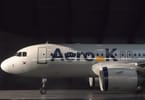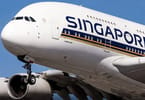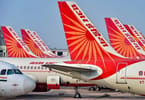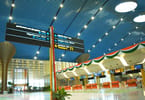This week we examine a recent case alleging that New York City’s 7-Day and 30-Day MetroCards are marketed in a deceptive and misleading manner in violation of General Business Law Sections 349, 350. Specifically, in Hollander v. Metropolitan Transportation Authority (MTA), 48 Misc. 3d 1206(A) (N.Y. Sup. 2015) plaintiff alleged “that he and other purchasers of these time-based cards have been misled by MTA’s allegedly deceptive practice of falsely advertising these unlimited ride cards, because such cards are valid for less than a full seven or 30 days”.
Travel Law Update
In-Flight Wi Fi Again
In Travel Law: In-Flight Wi Fi-High Barriers To Entry, www.eturbonews.com (6/4/2015) we discussed the case of Stewart v. Gogo, Inc., 2014 WL 324570 (N.D. Cal. 2014) wherein the Court noted that “Gogo Inc. is a company that provides broadband internet access to passengers on commercial aircraft… Plaintiffs…have filed a class action against Gogo, asserting that it has violated, inter alia, federal antitrust law because it has an unlawful monopoly in the ‘market of in-flight internet access services on domestic commercial aircraft flights within the continental United States’…Plaintiffs…allege that Gogo possesses 85% of the relevant market share”. One indicia, of course, of alleged market domination is the ability to raise prices, substantially.
In Chen, Personal Tech: In-Flight Wi-Fi Prices Jump as Demand Surges, nytimes.com (8/26/2015) it was noted that “In the inaugural installment of this new consumer technology feature, we examine the price increases for Wi-Fi on flights from the largest provider of the service, Gogo, and explain why some costs have escalated and some have not, and how travelers can sidestep the worst of the charges…Many travelers are experiencing sticker shock from in-flight Wi-Fi these days. While there are several in-flight Wi-Fi providers, including ViaSat and Global Eagle Entertainment, Gogo is the top provider, equipping more than 2,000 planes…up from 1,300 in 2011. Gogo’s prices often change depending on when and where you are flying. But on some flights-especially transcontinental routes crammed with business travelers who may have cushy expense accounts-prices have doubled from three years ago…Wi-Fi service on transcontinental flights…now costs $28 to $40, up roughly $18 in 2012, according to Gogo…Gogo’s prices are not just higher now; they are also more unpredictable. The company uses a method called dynamic pricing, in which it tries to forecast the demand for Wi-Fi on each flight and scale pricing accordingly. So the prices for the full durations of transcontinental flights also change each day: Gogo charges the most, $40 on Mondays and Thursdays; Tuesdays, Wednesdays, Fridays and Sundays cost $34; and Saturdays are the cheapest, at $28. During the uneven prices on certain routes is Gogo’s reliance on higher fees to ease overcrowding of its network…Some competitors that already offer satellite-based in-flight Wi-Fi technology have found opportunities to undercut Gogo’s prices. JetBlue, which uses satellite technology provided by ViaSat, provides free Wi-Fi service on the majority of its routes, though passengers can pay $9 an hour for faster Internet speeds. Southwest Airlines, which has teamed up with Global Eagle Entertainment on satellite services, charges a flat rate of $8 per Wi-Fi session…to get a cheaper rate for Gogo (you can order) the service before boarding the plane. People can buy an all-day pass to use Wi-Fi on any Gogo-equipped flight for $16, while frequent travelers can purchase a monthly subscription for $50″.
Positive Train Control Delayed Again?
In Nixon, Nation’s Rail Service Is Threatened as Deadline for Safety System Looms, nytimes.com (9/28/2015) it was noted that “Even after spending nearly $6 billion, the rail industry says it will not be able to meet its year-end government imposed deadline to install a system known as positive train control, which is intended to prevent collisions or derailments caused by excessive speed”.
Picking New Seats
In Fitzsimmons, Staten Island Ferry Riders Helping to Pick New Seats, nytimes.com (9/28/2015) it was noted that “While tourists gather on one side of the Staten Island Ferry to catch a glimpse of the Statute of Liberty, commuters often have another priority in mind: finding a quiet place to sit during the maritime leg of their journey. On Monday, New York City officials unveiled three new seating options for the ferry to make the ride a little more comfortable. The city’s Transportation Department wants to know which seats passengers would like best on the next class of Staten Island Ferry boats set to arrive in 2019″.
Airline Merger Growing Pains
In Harlan, Landing a mega-merger: The last days of US Airways, washingtonpost.com (9/25/2015) it was noted that “On Oct. 17, at 12:01 a.m., the Web site of US Airways will go dark…With that, US Airways will disappear as a brand. And its tens of thousands of employees and 655 planes will enter an unknown new world-that of American Airlines…Over the past 15 years in the United States, a burst of airline mergers created a group of mega-airlines, including American, that rank as four of the world’s five largest by passengers carried. But combining airlines has proved difficult and at times created fresh complications for harried travelers. While some of the mergers have worked well, others-particularly between United and Continental-have required constant triage, resulting in tech malfunctions and recurring, headache-induced delays and flight cancellations”.
Stay Away From Jalan Alor Street
In US Embassy warns Americans to avoid popular Kuala Lumpur tourist street, www.eturbonews.com (9/24/2015) it was noted that “The US Embassy in Malaysia warned American citizens on Thursday to avoid a popular tourist street (Jalan Alor) in the capital Kuala Lumpur because of ‘credible threat information regarding a potential terrorist act’”.
Uber Banned In Rio?
In Horch, Sao Paulo and Rio de Janeiro Are Expected to Ban Uber, nytimes.com (9/24/2015) it was noted that “Brazil’s two largest cities may be on the verge of banning Uber’s service, adding to the ride-hailing service’s growing list of regulatory problems. City Councils here (Sao Paulo) and in Rio de Janeiro recently passed bills that would prohibit Uber and other ride-hailing services like it. Now Rio’s mayor in planning to issue a decision on whether he will sign or veto one of the bills…”
Testing New FAA Drone App
In FAA releases smartphone app for unmanned aircraft users, www.eturbonews.com (8/28/2015) it was noted that “The Federal Aviation Administration (FAA) today released the beta version of a new smartphone application called ‘B4UFLY’ for testing by up to 1,000 unmanned aircraft users. The B4UFLY app, aimed primarily at model aircraft enthusiasts, is designed to give users information about restrictions or requirements in effect at their current or planned flight location. The FAA expects the beta test will yield valuable data on how well B4UFLY functions, as well as uncovering any software bugs”.
Airbnb Keeps On Growing
In Isaac, Airbnb Appoints Chris LeHane, Former Aide to Bill Clinton, as Head of Policy, bits.blog.nytimes.com (8/27/2015) it was noted that “Airbnb has close to doubled its work force in the past year and now employs more than 2,000 people globally. It also offers its service in more than 34,000 cities across 190 countries, each of which has different regional policymakers and regulations that require local expertise to navigate. The company…is valued at around $24 billion…While it has faced clampdowns in some American cities like New York, it has by and large run into fewer regulatory hurdles than Uber”.
Legionnaires’ Outbreak-Don’t Worry, Be Happy
In Hu, Brisk Business at Bronx Hotel, Center of Legionnaires’ Outbreak, nytimes.com (8/27, 2015) it was noted that “The Opera House Hotel had to turn off its air-conditioning one hot day this month so that a cleaning crew could scrub away the Legionella bacteria lurking in the cooling tower on its roof… Not much else has changed at the hotel at the center of the worst outbreak of Legionnaires’ disease in the city’s history. Business has been, if anything a little brisker. Occupancy rates have hovered between 90 and 95 percent for the past two months, slightly higher than a year ago, the management said…The Opera House Hotel…remained open throughout the outbreak, which claimed 12 lives and sickened more than 120 people, including two hotel guests, before city health officials declared it officially over last week. City health officials identified the hotel’s cooling tower as the source of the outbreak. Legionnaire’s disease, often described as a severe form of pneumonia, is contracted by inhaling contaminated mist from water sources harboring Legionella bacteria…But for the most part, the Opera House Hotel seems to have escaped the notoriety and stigma that kept guests away from the Philadelphia hotel that was the site of the first outbreak of Legionnaires’ disease in July 1976…In contrast, many guests staying at the Opera House Hotel this summer have shown no hesitation in wheeling their suitcases past its rooftop cooling tower, and the journalists camped out front. ‘I think the hotel is more popular than before’, said (Mr. X), who owns a CD shop next to the hotel. ‘Now everybody knows about the Opera House. People are not afraid. They come no matter what’”.
Cruise Ship Swimming Pool Death
In Marine Accident Investigation Branch (MAIB) Accident Report, Drowning of a Passenger on Sapphire Princess East China Sea 7 August 2014, gov.uk/maib it was noted that “At approximately 12:45, a number of passengers in Neptune Pool began screaming. A passenger at the poolside heard the screaming and immediately noticed Ms (X), floating face down in the pool, with bubbles coming from her mouth…Analysis…the circumstances of the incident…strongly suggest that the victim died as a result of drowning…The lack of dedicated pool attendants potentially delayed the response to the incident in respect of raising an alarm and administering appropriate medical treatment. The monitoring of CCTV converge of the area might have prompted an earlier response and would have given post-incident information …There was a delay in administering first-aid medical treatment…When CPR did commence, it was only briefly carried out by fellow passengers and had ceased by the time the medical team arrived at the pool. The crew members in the vicinity of Neptune Pool had not received instruction from the company in medical first-aid. The passengers providing first-aid assistance might also have been untrained which, in turn, is likely to have compromised the effectiveness of the resuscitation attempts…
Conclusions…With no formal documented risk assessment in place for the use of the ship’s swimming pools, associated hazards had not been formally identified. Consequently, no action had been taken to reduce either their likelihood of occurrence or severity of harm. It is possible that the absence of suitably trained personnel in the vicinity to the pool, which delayed the commencement of CPR on Ms (X), contributed to her not being resuscitated”.
The MetroCard Case
In Hollander v. Metropolitan Transportation Authority (MTA)(2015) the Court noted that “There are two general types of MetroCards: the value-based pass, which is assigned a dollar value, and the time-based pass, which may be used for an unlimited number of rides during a specific time period. As of November 25, 2013, when this lawsuit was commenced, the MTA sold ‘7-Day Unlimited Pass’ and ‘30-Day Unlimited Ride’ MetroCards for $30 and $112 respectively”.
7-Day MetroCard
“On the MTA’s website, it states that the 7-Day MetroCard is ‘[g]ood for unlimited subway and local bus rides until midnight, 7 days from day of first use’…The verified complaint alleges that such statement is not accurate, and that the 7-Day MetroCard is actually valid for six days from first use, plus a variable number of hours up until midnight on that sixth day. Thus, a 7-Day MetroCard purchased and swiped, for example, on Thursday, January 1, 2015 at 11:00 p.m., would expire on Wednesday, January 7, 2015 at 11:59 p.m. This occurs because the MTA counts January 1st as ‘Day 1’”
30-Day MetroCard
“The MTA likewise advertises the 30-Day MetroCard as ‘[g]ood for unlimited subway and local bus rides until midnight, 30 days from day of first use’…Plaintiff maintains that this statement is also inaccurate because the 30-day MetroCard is actually valid 29 days from first use, plus a variable number of hours up until midnight on that sixth day. Thus, a 30-Day MetroCard purchased and swiped on Thursday, January 1, 2015 at 11:00 p.m. would expire on Friday, January 30, 2015 at midnight. Again, January 1st is counted as ‘Day 1’”
1998 MTA Brochure
“Unlike the MTA’s present advertising of its MetroCards, plaintiff alleges that an older MTA brochure from 1998 actually gives an example to alert consumers that the 7-Day MetroCard expires six days from first use. While maintaining the ‘[g]ood until Midnight, 7 days from the day you first use the card, not from the day it was purchased’, language, this older brochure then adds” ‘If you start using your card on Monday morning, it will run out at Midnight on Sunday’..”.
The Charges
“Plaintiff alleges that the MTA is short-dating purchasers of unlimited-ride MetroCards by one day less than advertised, and that purchasers are not getting a full seven days (168 hours) of unlimited use for 7-Day MetroCards or 30 days (720 hours) for 30-Day MetroCard. This practice allegedly constitutes a deceptive business practice in violation of General Business Law 349, false advertising in violation of General Business Law 350, a breach of contract and unjust enrichment by the MTA”.
The MTA’s Response
“The MTA alleges that the unlimited ride cards were one of several fare incentives designed to address consumer advocacy group complaints about the lack of travel discounts while improving the penetration rate of MetroCards and phasing out tokens. There is no disputing that straphangers get better deals with these cards when they ride the subways and buses more frequently, and consequently, the MTA earns less per ride…The MTA further claims that users of unlimited ride cards are overwhelmingly satisfied, with the leading reason for choosing them over pay-per-ride cards being the cost savings and the security of knowing the card will not run out of value…As for its marketing practices, the MTA claims its approach has evolved over time, based on the assumption that subway and bus riders have grown accustomed to how these cards work…The MTA denies that there is anything in the current website description, i.e. ‘[g]ood for unlimited subway and local bus rides until midnight, 7 [or 30] days from day of first use’, that is in the least bit confusing or misleading to consumers”.
MTA Filed Tariffs
“The MTA’s website, moreover, does explicitly state that the use of unlimited ride MetroCards is subject to the MTA New York City Transit tariff, and similar language to such effect appears on the back of every MetroCard. The current tariff contains the following description of the 7-Day MetroCard: ‘Valid for unlimited rides on NYCTA subway or NYCTA/MaBSTOA/MTABC local bus or SIRTOA, taken within 7 days of initial swipe or dip of pass. Pass valid until 11:59 on the 7th day’”.
The Decision
“The crux of plaintiff’s case is that transit customers purchasing 7-Day or 30-Day MetroCards are entitled to a full seven or 30 days of use, because the MTA’s website and marketing materials advertise the cards as ‘[g]ood for unlimited subway and local bus rides until midnight, 7 [or 30] days from day of first use’. Focusing exclusively on the word ‘from’ in this sentence, plaintiff counts ‘Day 1′ as the day after first use. However, due to the clearly-stated mid-night deadline, the first day of use must be counted; otherwise, as plaintiff admitted at his deposition, a 7-Day MetroCard could last longer than 7 full days or 168 hours…Notably, nothing in the MTA’s website explicitly references seven or 30 ‘full’ days of use…That plaintiff is straining the interpretation of everyday English usage is evidenced by the absence of any customer complaints of short dating since the inception of the unlimited ride MetroCards more than eight years ago”.
The MTA Tariff Governs
“Even if the MTA’s description of how the cards work is unclear, the MTA’s website and marketing materials also state that ‘[u]se of Unlimited Ride MetroCards is subject to MTA New York City Transit Tariff and additional conditions’…The language of the applicable tariff is not misleading, because, rather than use the word ‘from’, it states ‘[v]alid for unlimited rides…within 7 [or 30] days of initial swipe or dip of pass. This language leaves no room for any inference that the first day of use would somehow be free. The plaintiff and the members of the public are ‘conclusively presumed to know’ the terms and conditions of legal tariffs (citing Poor v. NYNEX Corp., 230 A.D. 2d 564 (2d Dept. 1997)]. Indeed, the NYCTA tariff is approved only after extensive public hearings and is a document required by law to be filed with the Commissioner of the Department of Transportation and kept open to the public…What is known as the ‘filed rate doctrine’ bars judicial actions against federal- and state-regulated entities that are ‘grounded on the allegations that the rates charged by [those entities] are unreasonable…
‘Simply stated, the doctrine holds that any ‘filed rate’–that is, one approved by the government regulatory agency…is per se reasonable and unassailable in judicial proceedings brought by the ratepayers…’Any subscriber who pays the filed rate has suffered no legally cognizable injury’”.
Conclusion
As noted by the Court, notwithstanding any ambiguity or lack of clarity on the MTA website in describing the duration of the 7-Day or 30-Day MetroCards, there is no ambiguity in the filed tariff and, in any event, the filed rate doctrine precludes any challenge, regardless of the cause of action, or recovery in this case.
The author, Justice Dickerson, has been writing about Travel Law for 39 years including his annually updated law books, Travel Law, Law Journal Press (2015) and Litigating International Torts in U.S. Courts, Thomson Reuters WestLaw (2015), and over 350 legal articles. For additional travel law news and developments, especially in the member states of the EU, see IFTTA.org.
This article may not be reproduced without the permission of Thomas A. Dickerson.
WHAT TO TAKE AWAY FROM THIS ARTICLE:
- Com (8/26/2015) it was noted that “In the inaugural installment of this new consumer technology feature, we examine the price increases for Wi-Fi on flights from the largest provider of the service, Gogo, and explain why some costs have escalated and some have not, and how travelers can sidestep the worst of the charges…Many travelers are experiencing sticker shock from in-flight Wi-Fi these days.
- Plaintiffs…have filed a class action against Gogo, asserting that it has violated, inter alia, federal antitrust law because it has an unlawful monopoly in the ‘market of in-flight internet access services on domestic commercial aircraft flights within the continental United States'…Plaintiffs…allege that Gogo possesses 85% of the relevant market share”.
- Southwest Airlines, which has teamed up with Global Eagle Entertainment on satellite services, charges a flat rate of $8 per Wi-Fi session…to get a cheaper rate for Gogo (you can order) the service before boarding the plane.






















